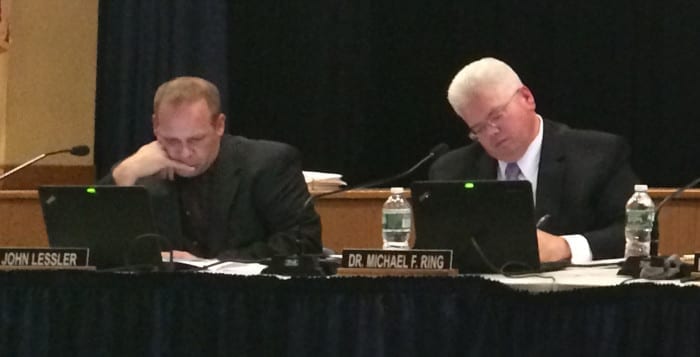By David Dunaief
Steroids have been in the news with headlines about sports figures like Alex Rodriguez, the NY Yankees baseball player notorious for their illegal use. However, if we look beyond the flashy headlines to rudimentary use, we see that corticosteroids, or steroids, play an important role in medicine. This is a commonly prescribed class of medications. In fact, our bodies make corticosteroids, the indigenous form of steroids, in the cortex of the adrenals, glands that sit on top of the kidneys. Here, we are going to concentrate on the exogenous form, meaning from the outside as medication.
The use or benefit
Steroids have an anti-inflammatory effect. This is critical since many acute and chronic diseases are based at least partially on inflammation. Chronic diseases that benefit include allergic, inflammatory and immunological diseases (1). These types of diseases touch on almost every area of the body from osteoarthritis and autoimmune diseases — rheumatoid arthritis, inflammatory bowel disease, multiple sclerosis, lupus, psoriasis and eczema — to asthma, COPD (emphysema and chronic bronchitis) and eye disorders. This type of medication is pervasive.
The delivery
Steroids are delivered via the oral route, as topical creams, lotions and eye drops or via injections, intravenous solutions and inhaled formulations. The most commonly known medication is prednisone, but there is a plethora of others, including prednisolone, methylprednisolone, cortisone, hydrocortisone and dexamethasone.
Their benefits can be tremendous, improving functionality and reducing pain or improving breathing. You could say they are lifesaving in some instances, and with rescue inhalers they may just be that.
The bad
However, there is a very big caveat: they come at a price. Steroids have lots and lots of adverse events associated with them. This is where the bad part comes in and keeps on coming. Steroids cause weight gain, increased glucose (sugars), high blood pressure, cardiovascular events, osteoporosis, change in mood (psychoses), cataracts, glaucoma, infection, peptic ulcers, Cushing’s syndrome and the list goes on. Ironically, steroids help with breathing; however, as I’ve seen in my clinical experience, they can cause shortness of breath when weaned from a longer-use high dose too quickly.
The upshot
The good news is that a plant-based diet may have similar beneficial effects in chronic diseases as steroids without all the downsides. Let’s look at the evidence.
The role in pneumonia
Pneumonia is among the top-10 leading causes of death in the world (2). It can be a most painful and debilitating disease. I know, for I experienced it personally while I was in my medical training. Every time I coughed, it felt like there was a fire in my chest.
In a meta-analysis (a group of nine studies), there was no overall effect of corticosteroids in reducing the risk of mortality in community-acquired pneumonia (3). However, don’t fret; when the data was broken into subsets, the findings were different. In subset data of those who had severe pneumonia, there was a statistically significant 74 percent reduction in mortality. And when duration was the main focus in subgroup analysis, those who received prolonged use of steroids reduced their risk of mortality by half. Unfortunately, with the benefit comes an increased risk of adverse events, and this meta-analysis was no exception. There was a greater than two times increased risk of abnormally high glucose levels with prolonged use. Thus, when giving steroids, especially for a prolonged use, it may be wise to check glucose levels.
In a more recent randomized controlled trial (RCT), the gold standard of studies, the results reinforced the beneficial effects of steroids on pneumonia. They showed that in those with both severe pneumonia and high inflammation, there was a two-thirds reduction in treatment failures when corticosteroids were added to the regimen (4). There were 120 patients involved in the study. They received antibiotics plus either methylprednisolone or placebo for five days.
Osteoarthritis: surprising results
As we know, osteoarthritis specifically of the knee is very common, especially as the population continues to age. Intra-articular (in the joint) injections directly into the knee are becoming routine treatment. A recent study compared injectable hyaluronic acid to injectable corticosteroid (5). The results showed that over three months, the corticosteroid was superior to hyaluronic acid in terms of reducing pain, 66 percent versus 43.8 percent, respectively. Interestingly, over the longer term, 12 months, hyaluronic acid reduced the pain and maintained its effect significantly longer than the steroid, 33 percent versus a meager 8.2 percent, respectively. Study groups received five injections of either steroid or of hyaluronic acid directly to the knee over a five-week period. Thus, steroids may not always be the most effective choice when it comes to pain reduction. Hyaluronic acid may have caused this beneficial effect by reducing inflammation, protecting cartilage and preventing cell death, according to the authors.
COPD: length may not matter
It is not unusual to treat COPD patients with oral steroids. But what is the proper duration? The treatment paradigm has been two weeks with 40 mg of corticosteroids daily. However, results in an RCT showed that five days with 40 mg of corticosteroid was noninferior (equivalent) to 14 days of the same dosage and frequency (6). About one-third of patients in each group experienced a COPD exacerbation within the six-month duration of the trial. The hope is that the shorter use of steroids will mean fewer side effects. There were over 600 patients in this trial. We have come a long way; prior to 1999, eight weeks of steroids was a more commonplace approach to treating acute COPD exacerbations.
Topical steroid risk
Even topical creams and lotions are not immune to risk. For example, potent topical creams and lotions placed around the orbit of the eye with prolonged use may negatively affect vision (7). However, the evidence is based mostly on case reporting, which is a low level of evidence.
Dietary effect
One of the great things about steroids is that they reduce inflammation, and we know that the basis of greater than 80 percent of chronic disease is inflammation. A plant-based diet involving lots of vegetables and fruits and some grains may have a similar effect as steroids. The effect of diet on chronic disease may be to modify the immune system and reduce inflammation (8). The bioactive substances from plants thought to be involved in this process are predominantly the carotenoids and the flavonoids. Thus, those patients who respond even minimally to steroids are likely to respond to a plant-based diet in much the same beneficial way without the downsides of a significant number of side effects. Diet, unlike steroids, can be used for a long duration and a high intake, with a direct relationship to improving disease outcomes.
In conclusion, it is always better to treat with the lowest effective dose for the shortest effective period when it comes to steroids. The complications of these drugs are enumerable and must always be weighed against the benefits. Sometimes, other drugs may have more beneficial effects over the long term such as hyaluronic acid injections for knee osteoarthritis. A plant-based diet, with anti-inflammatory properties similar to steroids, may be a useful alternative for chronic disease or may be used alongside these drugs, possibly reducing their dosage and duration.
REFERENCES
(1) uptodate.com. (2) N Engl J Med. 1995;333(24):1618-24. (3) PLoS One. 2012;7(10):e47926. (4) JAMA. 2015;313(7):677-686. (5) Open Access Rheum 2015;7:9-18. (6) JAMA. 2013;309(21):2223-31. (7) Australas J Dermatol. Mar 5, 2015. (8) Int J Vitam Nutr Res. 2008 Dec;78(6):293-8.
Dr. Dunaief is a speaker, author and local lifestyle medicine physician focusing on the integration of medicine, nutrition, fitness and stress management. For further information, go to the website www.medicalcompassmd.com and/or consult your personal physician.














